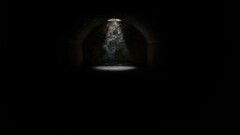I suppose by now we all know a least a few people who have begun the process of deconstructing their faith. Meanwhile, we have undoubtedly heard of many more who are doing so in a public way—celebrities who have decided to rigorously examine the faith they once professed and to reject much of what they once held dear. Deconstruction, it seems, is all the rage.
Ian Harber is familiar with both the allure and the process of deconstruction. He was raised in the church and followed the rules of conservative evangelicalism. He tried to live a godly life. But as he grew up and began to grapple with deep matters, he found himself increasingly concerned about what he had been taught about hell, science, the roles of men and women, and much else. Eventually, he determined the Christian faith could not provide satisfying answers. And so he left it all behind.
Today, though, he is following the Lord. He worships God as a member of a church, he creates content for Christian media outlets, and he writes a newsletter where much of his emphasis is on reconstruction. He is also the author of a new book titled Walking Through Deconstruction: How to Be a Companion in a Crisis of Faith.
As you may surmise from the title, he did not set out to write the kind of book you might hand to a loved one who is beginning to express significant doubts about the Christian faith or who is even well into the process of deconstructing it. Though I suppose it could function that way, that’s not its primary purpose. Rather, this is a book to comfort, guide, and challenge those who long to help loved ones who are deconstructing.
The term deconstruction has come to have many meanings, leading to lots of confusion about what it is and isn’t. It’s become a word with a negative connotation because its definition is so ambiguous. I believe we need clarity, not to confine anyone or gatekeep an experience, but to understand and minister to those truly going through it. Lots of books are being written about deconstruction right now. Most of the books I have seen have been written by pastors, professors, or writers for people who are in the process of deconstructing—and some of them are very good! We need these books to be written.
And here is where he gets to the purpose of his book.
But what about from the opposite direction? From someone who has deconstructed and reconstructed their faith writing to the church and for the church. Plenty of angry exvangelicals have written their tell-all memoirs railing against the failures of the church. Plenty of fundamentalists have written to warn people about the dangers of deconstruction. What I hope to do in this book is serve the church in this crucial ministry as someone who has been deeply hurt by the church and wonderfully healed by Jesus through the ministry of the local church.
Thus, the “walk” in Walking Through Deconstruction is not so much the walk of the one doing the deconstruction but the ones who are lovingly accompanying him or her. “This book is about you and the people you love and minister to who are deconstructing their faith. I imagine you are coming to this book with lots of questions. What is deconstruction? What causes it? What is the experience like? How can we help people who are deconstructing? Is there anything we can do to make deconstruction less intense and prevalent in our churches? These are the topics that this book sets out to address.”
Harber lays out what he calls “the path of deconstruction and reconstruction.” The first part of the book focuses on the former. He first defines the term and considers the reasons people deconstruct their faith. Then he situates deconstruction within the Christian life and lexicon before describing how it is experienced by those who go through it. From there he considers how deconstruction affects an individual’s beliefs, how the church plays a role, and how different cultural pressures influence the process. He wraps up this opening section by considering the different potential outcomes of deconstruction: replacing faith with something else entirely, remixing faith into some hybrid of Christianity and something else, or, far better, renewing faith. “This is when someone pushes through The Wall of deconstruction and comes out the other side with their faith in Jesus stronger than before. It doesn’t mean all their questions are answered, or all of their doubts are relieved. No, the person who has gone through deconstruction isn’t going to be fooled into thinking they need to have perfect certainty about much anymore. What they have instead is trust: a settled confidence.”
In the second section, the focus turns to reconstruction and here Harber considers how to construct satisfying Christian beliefs in those very areas that most often contribute to deconstruction: relationships, suffering, the strength or force with which we hold different beliefs, and so on. He expresses the importance of the local church and concludes by simply gazing at God in his beauty because in the end, God isn’t just some answer to our questions but a beautiful, satisfying being to whom we can relate in love and wonder.
While deconstruction is a long, dark night, it gives us the opportunity to see God’s light break over our doubts and disillusionment and shine in our lives, revealing things that were there the whole time that we never saw before.
Ian Harber
Ultimately, Harber wants Christians who are witnessing a loved one beginning to deconstruct their faith to withhold panic and to ensure they do not respond with unnecessary fear or harshness. Instead, he wants them to prove trusted friends and a non-anxious presence in their life, to remain engaged and available, and to prayerfully seek God’s grace. He ultimately wants them to trust that God can work great good as people pass through a severe testing of their faith. “Deconstruction is a messy and complicated process. My hope is that you are equipped for all kinds of different situations at the end of this book. Our goal is to faithfully walk alongside our loved ones who are deconstructing their faith and surrender ourselves as an instrument in God’s hands, praying for the renewal of their faith.”
Deconstruction is a scary process to witness, but Harber is proof that it doesn’t have to be the end of a person’s faith. “While deconstruction is a long, dark night, it gives us the opportunity to see God’s light break over our doubts and disillusionment and shine in our lives, revealing things that were there the whole time that we never saw before. The darker and more harrowing the night, the more awe there is at the sight of morning’s first light.” May God use this book to help faithful Christians guide their wavering loved ones through the darkness of night and into the light of a whole new day.










